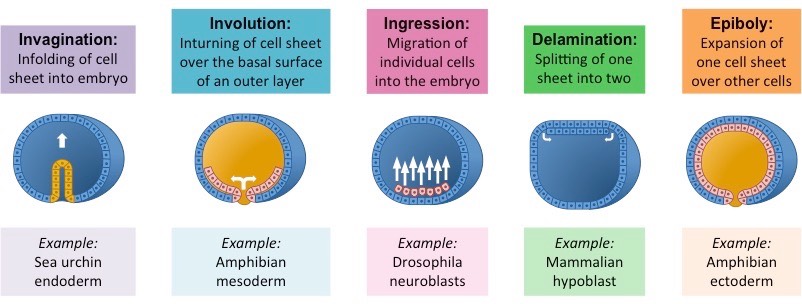Gastrulation is an early phase of embryogenesis whereby a single-layered blastula differentiates into three germ layers
- The organisation of cell layers occurs by different mechanisms in different types of animals
- The end result in all cases is a trilaminar (three layered) mass of cells called a gastrula
- Gastrulation precedes further cellular differentiation by processes such as neurulation
Types of Cell Movements During Gastrulation

Germ Layers
Gastrulation results in the production of three germ layers – ectoderm (outer), mesoderm (middle) and endoderm (inner)
- The ectoderm will form the nervous system (via neurulation) and outer surfaces such as skin, pigment cells and hair cells
- The mesoderm will form the majority of body organs, including muscle, blood vessels, kidney, heart and skeleton
- The endoderm will form the respiratory and digestive tracts, as well as associated organs such as the liver and pancreas
Differentiation of the Three Germ Layers

